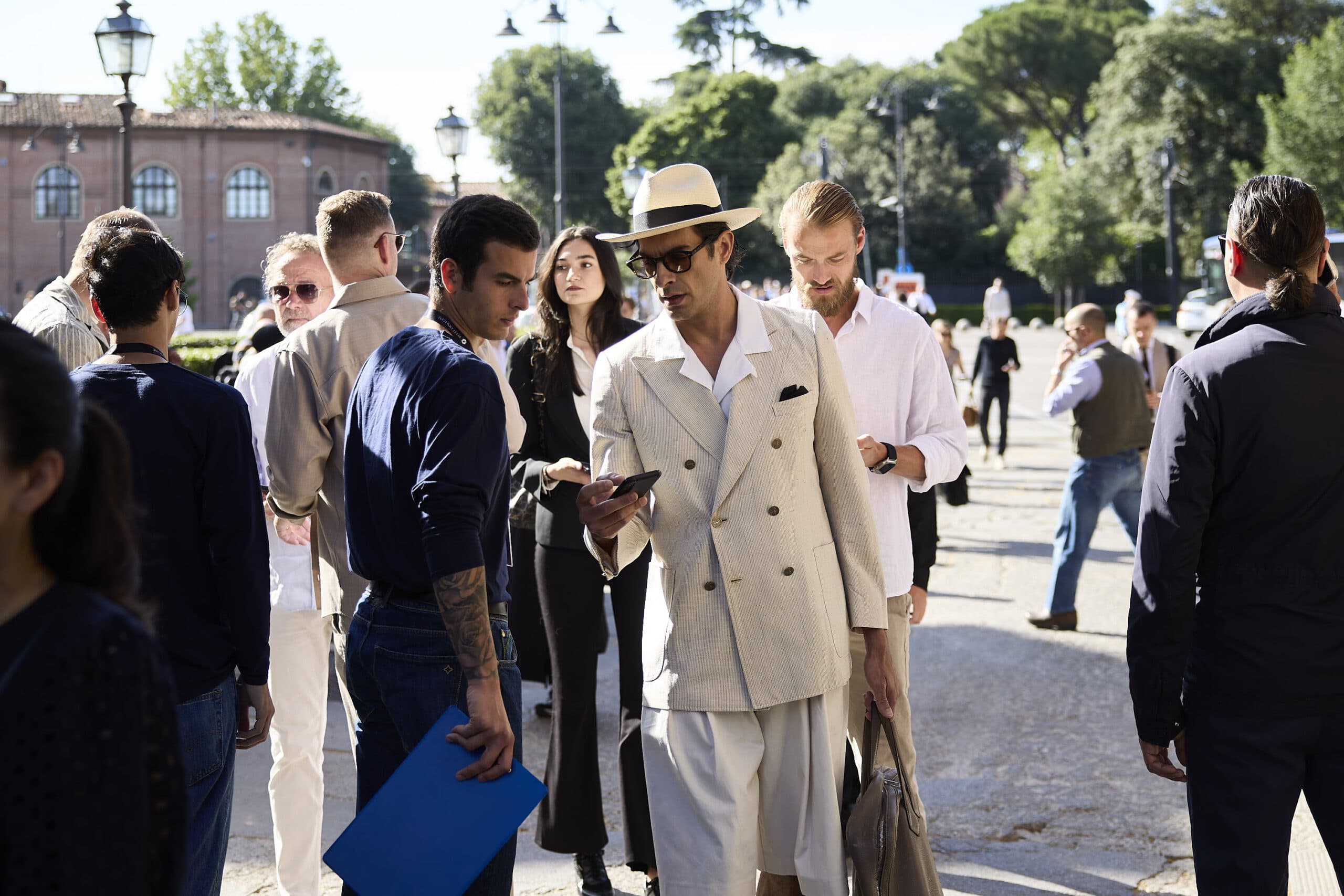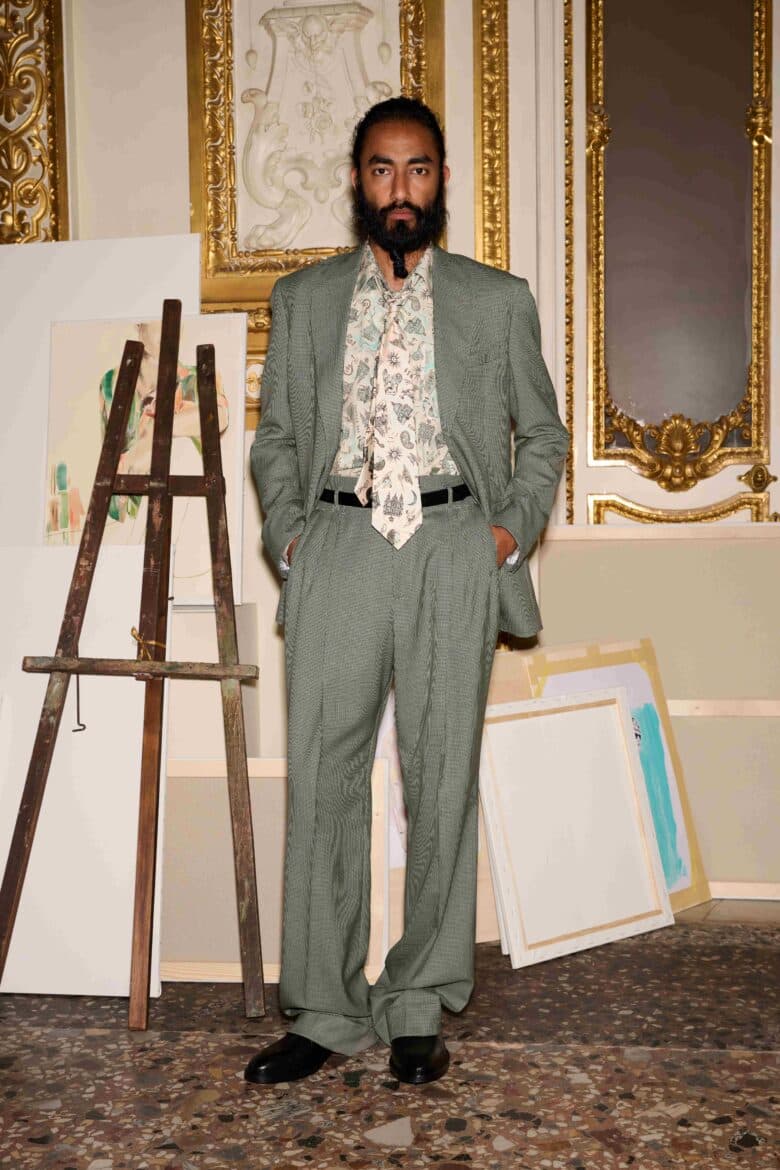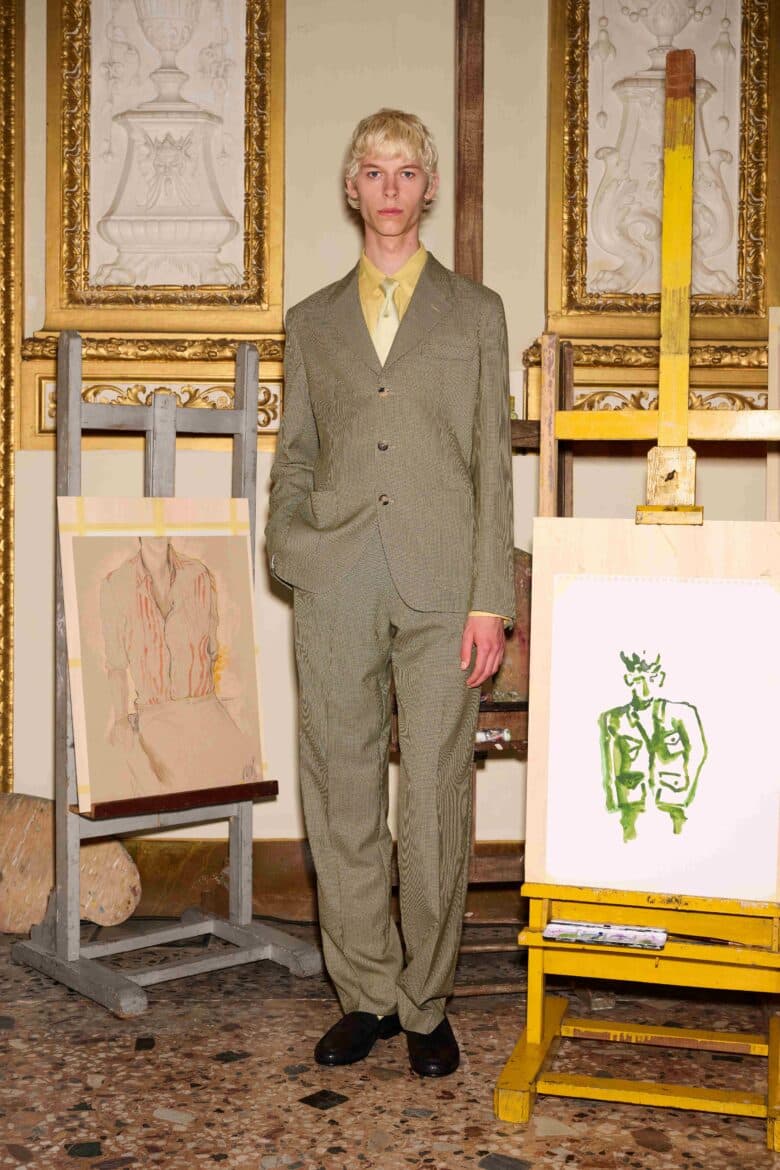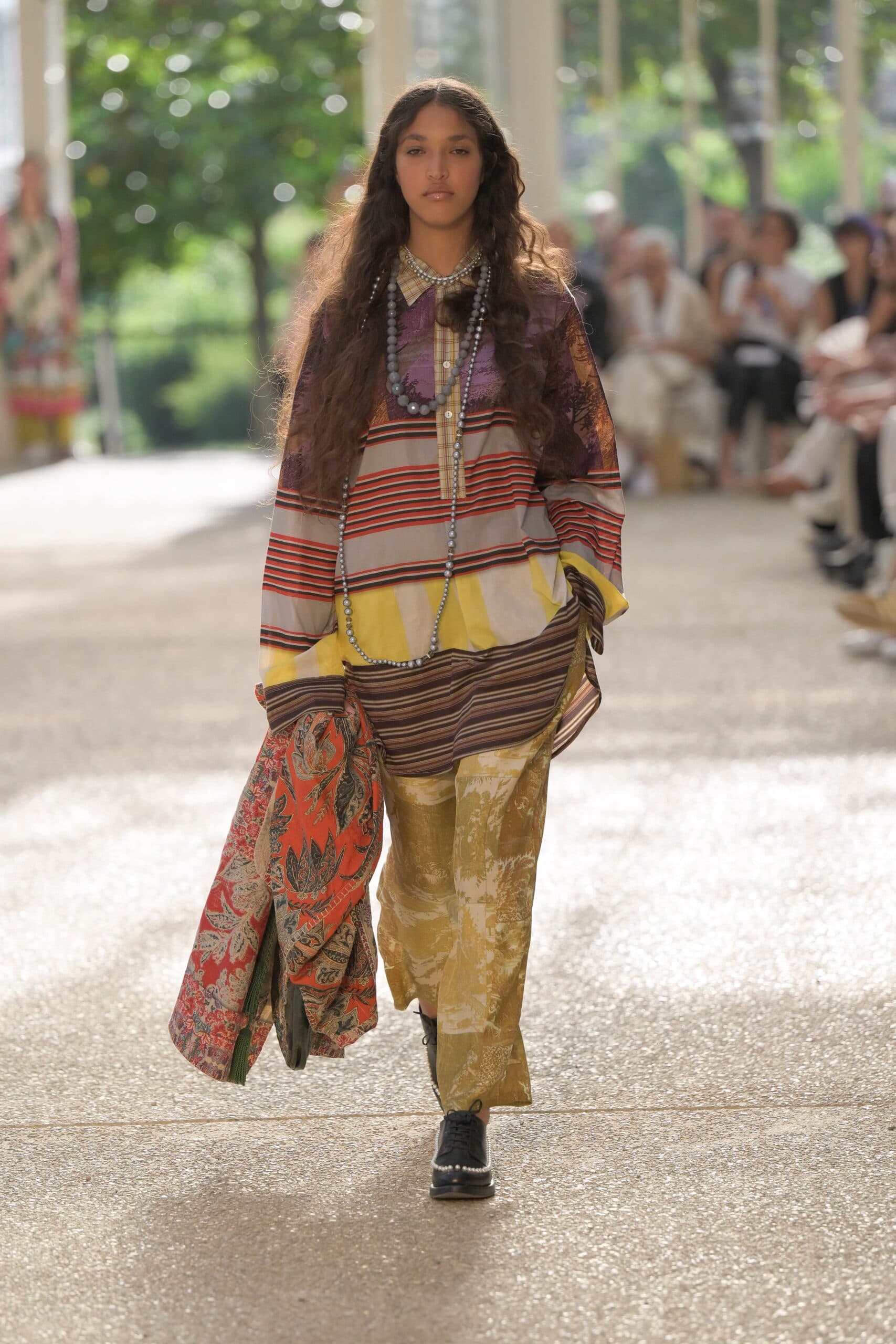Pitti Uomo — A celebration of style, tradition, and innovation in Florence

Briefly, Pitti Uomo is a fair where fashion brands exhibit their latest collections to buyers and the press. It is one of the biggest trade shows in fashion and each edition has thousands of visitors that enter the gates. To most people, this might not sound that intriguing, but Pitti Uomo has grown to such an extent that it’s no longer just a trade show for people within the industry. It has become a festival for style enthusiasts alike.
During ordinary fashion weeks – in major cities such as Milan, Paris and New York – everything is on ’invitation only’, and fashion weeks are more diluted with the day to day life. They’re exclusive events that are reserved for only a few. In Florence, the situation is different. During the days of Pitti Uomo, there is a buzz going around town, and as an outsider to the event you really get the sense that there is something special going on. The usual tourists that pilgrim to Florence are swapped out with trendsetters, and if you visit Florentine institutions such as Caffè Gilli, Harry’s Bar, Buca Mario, Camillo and the Irish pub, Fiddler’s Elbow, you can expect to rub shoulders with the biggest names in men’s fashion into the small hours.

The venue for the fair itself, Fortezza da Basso, is a Renaissance fortress in central Florence that, like many things in the city, has connections to the Medici family. In the ’60s it was turned into a modern exhibition centre. As well as being a magical combination of a history and modernity, Fortezza da Basso has proven to be the perfect backdrop to fashionable street style photos — photos that, in the age of social media, have contributed to the success and spread of Pitti Uomo. It’s also garnered a reputation for being the gathering point of so-called peacocks — people, usually men, who push the style-boundaries in an attempt to be distinguished from the rest of the crowd. Think bright-coloured, bold-patterned suits, cylinder heads and crazy accessories. This year, a man came on a horse (!) in order to be papped by street style photographers outside of the gate. It is unknown if this was some sort of Lil Nas X reference.
Except for the main venue, there are also events in palaces, gardens and squares all over town. The organizer, Pitti Immagine, holds a splendid track record of organising fashion shows outside of the trade show, with Wales Bonner, Fendi, Ferragamo and Off White being just a few of the names on the schedule in recent years. The headliners for this season were Paul Smith — who was one of the first designers to be invited to the event – as well as Marine Serre and Pierre Louis Mascia.
Sir Paul Smith presented his SS25 collection in Villa Favard, an old Florentine manor house that today houses the fashion institute, Polimoda. Smith opted for a smaller presentation than his usual Paris slot. ”It was a very personal thing to do because I think in the world today, there’s a lot of very big runs,” explained Sir Paul Smith to HUNGER. “I think we need a bit of personality. And luckily, we did that today”.


The collection itself is inspired by the artistic, bohemian spirit of London’s Soho during the ’60s and ’70s — think the beginnings of London’s now prolific pub culture, and when TikTok was just the sound of a clock. “[The collection] is about the artists of London. In Soho, in the sixties and seventies, there were a lot of Italian restaurants opening, which was very amazing at the time,” explains Smith. “And then at the same time, there was Lucian Freud, Francis Bacon and all those artists, and it was a wonderful hive of activity. [The collection] is very much based on that energy”.
The other special event was the Marine Serre show — staged in the gardens of a Renaissance Palazzo, outside of Florence, the rolling Tuscan hills acted as a backdrop. In Serre’s SS25 collection upcycling takes a front seat, tailoring is loosely inspired by the film The Godfather, and the half-moon motif, which she has become widely known for, is omnipresent.


On Thursday, it was time for the Italian-based French designer, Pierre Louis Mascia, to make his runway debut. The show, which took place in an imposing greenhouse called Tepidarium Giacomo Roster, started with a ten minute dance performance. What then followed was a parade of models wrapped in luxurious silk fabrics in a variety of different patterns and colours — simultaneously bohemian and sumptuous. And all of that was accompanied by onlookers feverishly wafting fans thanks to the heat.
Shows and events aside, Pierre Louis Mascia was just one of the nearly 800 brands that exhibited their upcoming collections at Pitti Uomo.

Five brands you should keep on your radar
Rovi Lucca
Rovi Lucca is founded by IRL couple Bradley Seymour and Fabrizio Taliani. Seymour comes from the editorial world, and Taliani has extensive experience as a designer at Zegna. They founded Rovi Lucca during lockdown when they were both residing just outside the small Tuscan village of the same name. The starting point for the brand is the garden, and their muse is Elisa Napoléone Baciocchi, who commissioned the Botanical Garden of Lucca in the 19th century. With natural materials in muted colours, the brand is refining workwear, making it that little bit more romantic. But fear not — even if you don’t possess a flaunt-worthy garden, the clothes from Rovi Lucca will work in the city as well.


Buzigahill
A special project Pitti Uomo has been running for nearly ten years is the section called S|Style — a section dedicated to brands challenging and demonstrating a best-in-class commitment to sustainable practices. Notable alumni from S|Style include S.S. Daley, Federico Cina and Myar.
There’s a lot of things wrong with our consumerist society. Namely, us Westerners overproduce things to such an extent that we can’t even consume them, and that’s especially true when it comes to clothes. The things we don’t need, for example? They are being sent to developing countries.
Bobby Kolade is the founder of and designer behind Buzigahill. With experience from Maison Margiela and Balenciaga, Kolade has now settled down in Kampala, Uganda, and found an innovative way of leveraging a broken system. The clothes that have been sent to Uganda from Western countries are being redesigned and upcycled. The brand’s motto is “RETURN TO SENDER” — as much as Buzigahill is a fashion brand, it’s also highlighting a bigger issue.


Denzilpatrick
Another brand that was part of S|Style was London-based, Denzilpatrick. Behind the brand are the partners in business and life (winning combo, perhaps?) Daniel Gayle and James Bosley. Gayle, before starting the brand, worked as a designer at Kenzo, Philip Lim, Jonathan Saunders and Victoria Beckham. The inspiration for the brand comes from Gayle’s grandfathers, Denzil and Patrick, who migrated from Jamaica and Ireland to London in the 1950’s. As a homage to both his grandfathers – and all other Londoners from diverse backgrounds — the brand is all about celebrating the eclectic mix of people that make up the big smoke.
Hot off the back of their first LFW show in earlier in June, Denzilpatrick’s SS25 collection gets its inspiration from leisure and working class uniforms — it transports you back to summer days at the lido, or lazy days spent in a tracksuit. Technical materials are juxtapositioned with sheer drape fabric and soft silk, and pieces even feature artwork made by Bosley.


House of Sunny
House of Sunny is the “It” brand that’s gained global success and made the rounds on social media. Many will think of them as a brand catering to women — or, at least, they’ll think of them as gender neutral – but a few seasons back they started offering up menswear. With a playful approach towards clothing, House of Sunny makes clothes to cheer you up — intrinsically down to earth and wearable. The brand has also made itself famous for having a social-minded approach to making clothes. Think vegan leather, recycled materials, and inclusive campaigns.


Henrik Vibskov
For a few seasons, Pitti Uomo has been hosting a pavilion focused on Scandinavian fashion. Called Scandinavian Manifesto, the curation of the pavilion was recently handed over to CIFF (Copenhagen International Fashion Fair), which is endeavouring to take things even further. But one of the protagonists of the Italian stint – and Scandinavian fashion at large – was Henrik Vibskov. Participated in both showrooms as well as having a presentation on the official schedule, Vibskov is a CSM-alumni that’s made waves in fashion for more than 20 years. The inspiration for his SS25 collection? Hands. Why? When he got a call from the Royal House in Denmark telling him he’d won an award, he had blue cheese all over his hands… Why not, eh?








